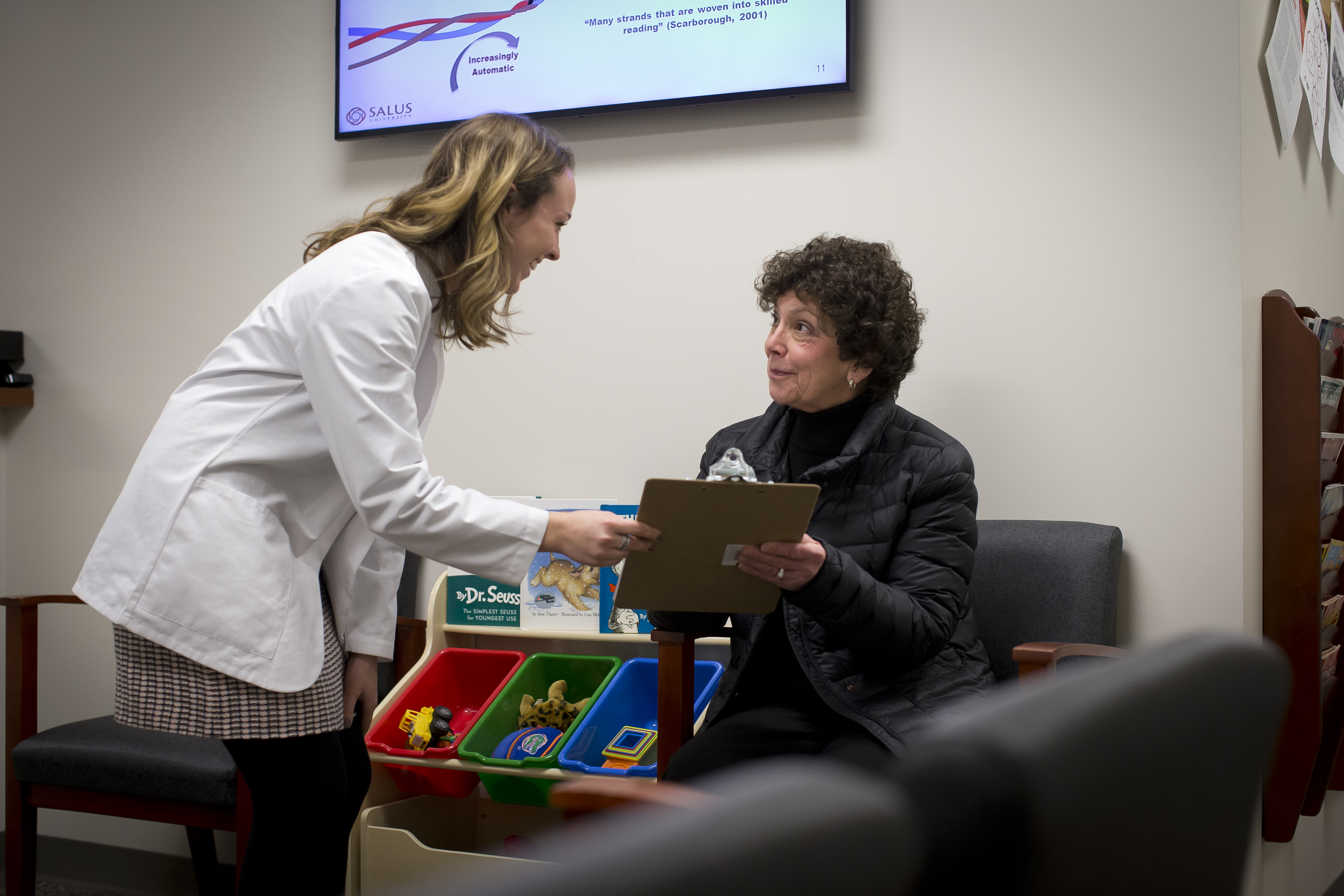Understanding Stuttering and How It’s Treated
 Stuttering is one of the more well-known speech disorders because it’s typically easy to recognize in another person. Stuttering affects one’s fluency of speech. Dysfluencies may be marked by the repetition of sounds, syllables or words; prolonged speech sounds; and disruptions in the production of speech called blocking.
Stuttering is one of the more well-known speech disorders because it’s typically easy to recognize in another person. Stuttering affects one’s fluency of speech. Dysfluencies may be marked by the repetition of sounds, syllables or words; prolonged speech sounds; and disruptions in the production of speech called blocking.
Approximately three million Americans and 70 million people worldwide stutter. Typically, people begin to stutter in childhood, which can continue throughout their life, but most children outgrow it. About 75 percent of children recover from stutter. For the 25 percent that continue to stutter, therapy with a speech-language pathologist (SLP) can help.
Types of Stuttering
The most common form of stuttering is developmental stuttering. It presents when young children are still developing their speech and language skills. Many scientists and clinicians believe this form of stutter occurs as a result of multiple, complex factors. Brain imaging studies have shown marked differences in those who stutter versus those who do not. Developmental stuttering may also have genetic implications.
Neurogenic stuttering develops after a stroke, head trauma or another type of brain injury. The brain struggles to coordinate the different regions involved in speaking, which causes disfluencies in speech.
Symptoms of Stuttering
There are three distinct variations of stuttering: part-word repetition, sound prolongation and frequent interjections.
Part-word repetition example: “S-S-S-She said we were meeting at 1 o’clock.” The speaker has difficulty moving from the “S” in “she” to the remaining syllables in the word.
Sound prolongation example: “WWWWhere are you going?” The speaker has trouble saying the remaining sounds in “Where” and drags out to sound of the “W.”
Frequent interjections example: “I think he – um um um you know like – said he’d save us a seat.” The speaker produces a series of interjections because he is having difficulty transitioning from the word “he” to the rest of the sentence.
In addition to the three types of disfluencies, those who stutter may also blink rapidly or have lip tremors while they are struggling to communicate. In many cases, speaking in front of a group or speaking on the telephone may make someone’s symptoms more severe.
Social Effects of Stuttering
Due to its more obvious presentation, stuttering can result in communication and social issues. Those who stutter may experience difficulty in interpersonal relationships, at work or school and in social situations.
Diagnosing Stuttering
An SLP will evaluate a number of factors including: when the stuttering first emerged, the types of disfluencies someone produces in varying situations, how someone copes with disfluencies, and someone’s speech rate and language skills. The SLP will conclude if a fluency disorder exists and the extent to which it affects someone’s ability to participate in certain daily activities.
When assessing a young child, an SLP will try to determine if the child is likely to grow out of the stuttering behavior. An SLP will look at whether or not there is a family history of stuttering, if the behavior has lasted more than six months and if there are any other speech-language problems present.
Treatment for Stuttering
While there is no cure for stuttering, therapies can help children and adults manage the condition. For children, therapy is focused on improving speech fluency and developing positive attitudes toward communication. Early treatment of childhood stuttering may prevent it from becoming a lifelong problem.
For teens and adults, therapies focus on attempting to minimize stuttering by speaking more slowly, regulating breathing or gradually progressing from single-syllable responses to more complex sentences. Therapies may also help those who stutter cope with the anxiety they feel in certain speaking situations.
The Speech-Language Institute of Salus University offers comprehensive evaluation services and treatment plans for stuttering. Contact us today to learn more about how we personalize treatment plans for each client’s needs.